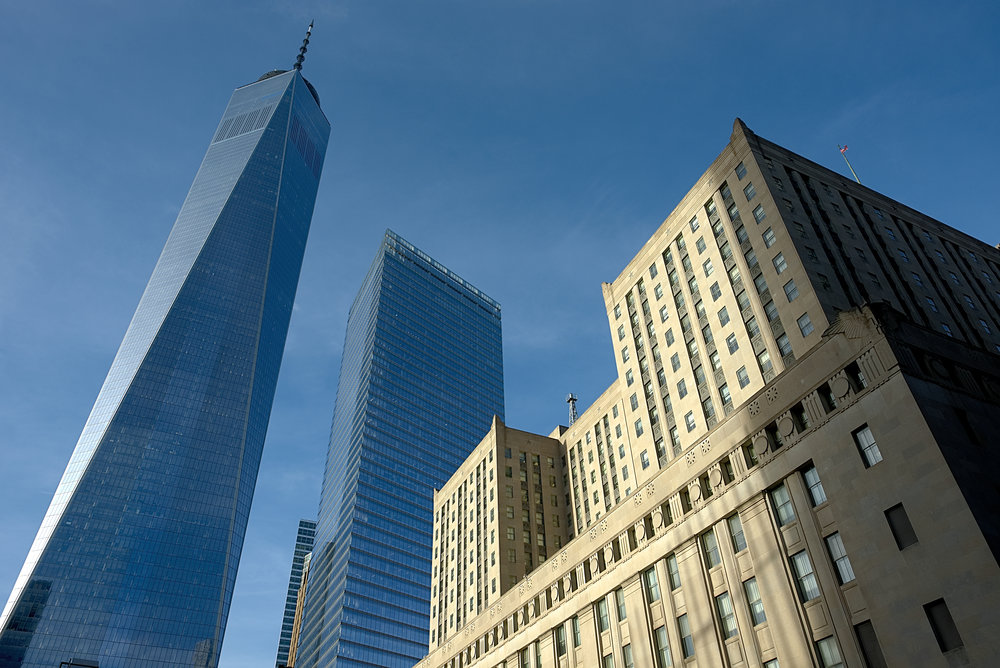
Visiting New York for the first time cannot fail to be exciting even for such confirmed country-lovers as my wife and me. Although we had eagerly anticipated our first visit in January 2017, we were both surprised at just how exhilarating, awe-inspiring and unforgettable New York was to prove.
New Yorkers are indeed no shrinking violets and the city doesn’t hide its light under a bushel — or under any other old cliché for that matter. As one of the most frenetic cities on the planet, it’s in your face all day and famously never sleeps at night. We loved it.
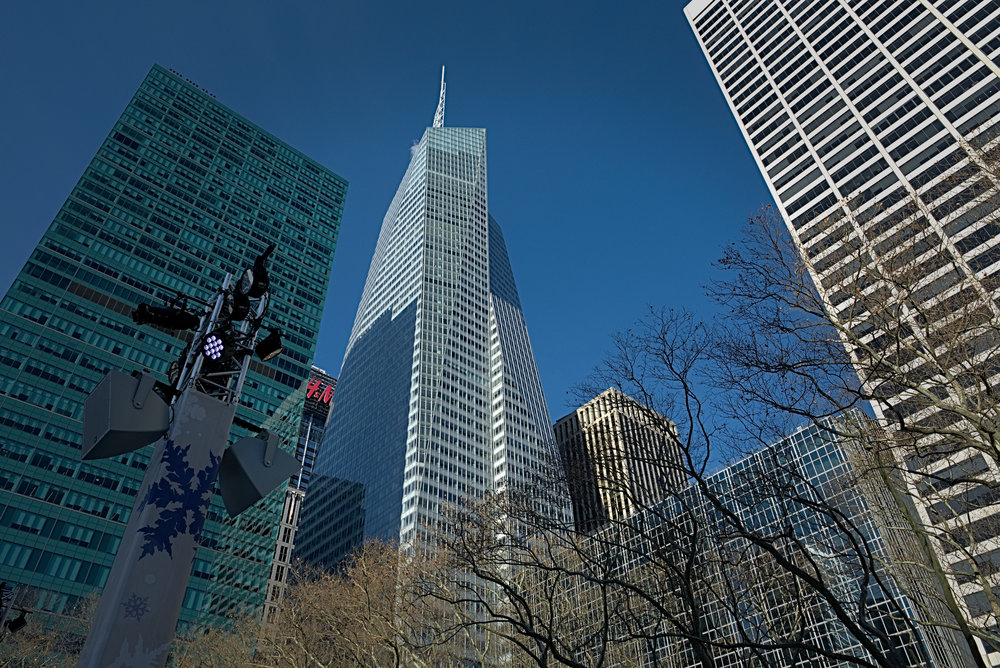
There are indeed some real problems for photographers. As in other major cities, the must-see locations are iconic landmarks which are photographed millions of times a year. The only valid response to this problem is to tell yourself that the whole city and everything in it is wholly new to you.
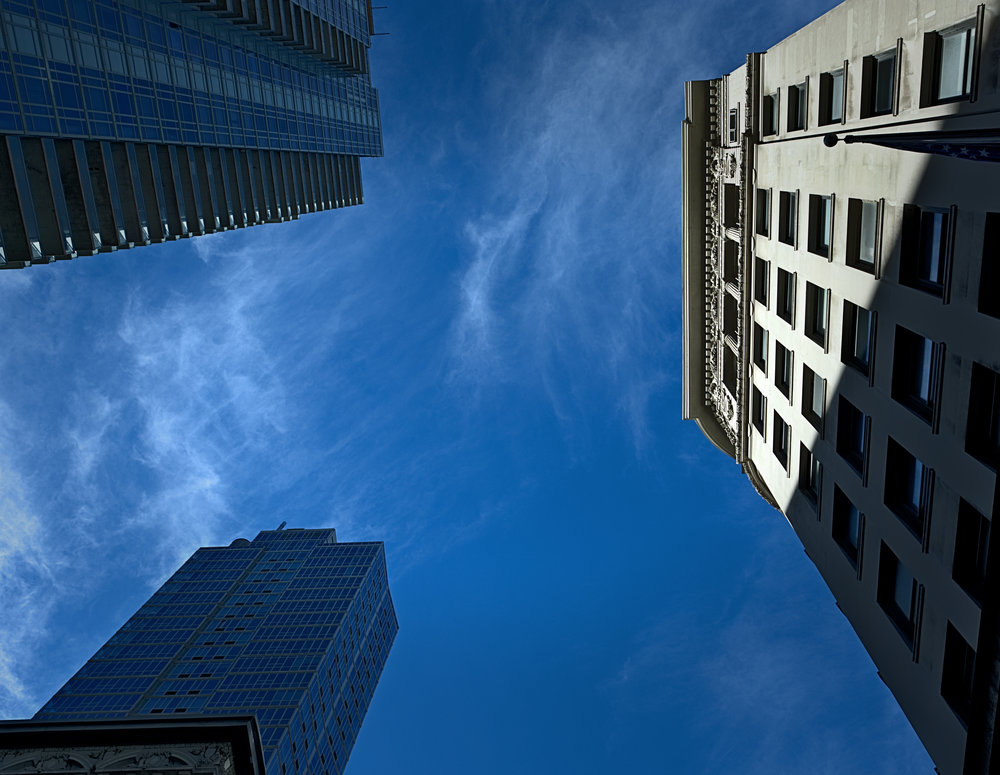
The second photographic problem relates to skyscrapers and two of their aspects. On the one hand, they are immensely tall and often display huge variations in dynamic range, since some of their faces are very light while other faces are very dark. On the other hand, they also produce fiercely converging verticals in images when a lens is pointed upwards.
I am not sure of best practice when dealing with converging verticals in such extreme situations. Up to now I have always attempted to correct such problems in post processing wherever possible. But what I found after returning from New York is that some images benefit from being corrected, others do not. So that’s what I’ve done. It seems to me that the fiercely converging verticals in some images convey far more of what New York felt like to me at the time than the corrected version would do. Others may disagree with the choices I made.
We ascended to the top of the Rock, the Rockefeller Building, for our high-level views of the city, since we had been advised it was a better observation platform than the one on top of the Empire State. We particularly enjoyed the view of the whole of Central Park and the part of the city across to the Hudson river. In 2009, this was where Captain Chesley Sullenberger, of US Airways Flight 1549, safely landed his Airbus 320 upon the river, saving the lives of all 155 passengers.
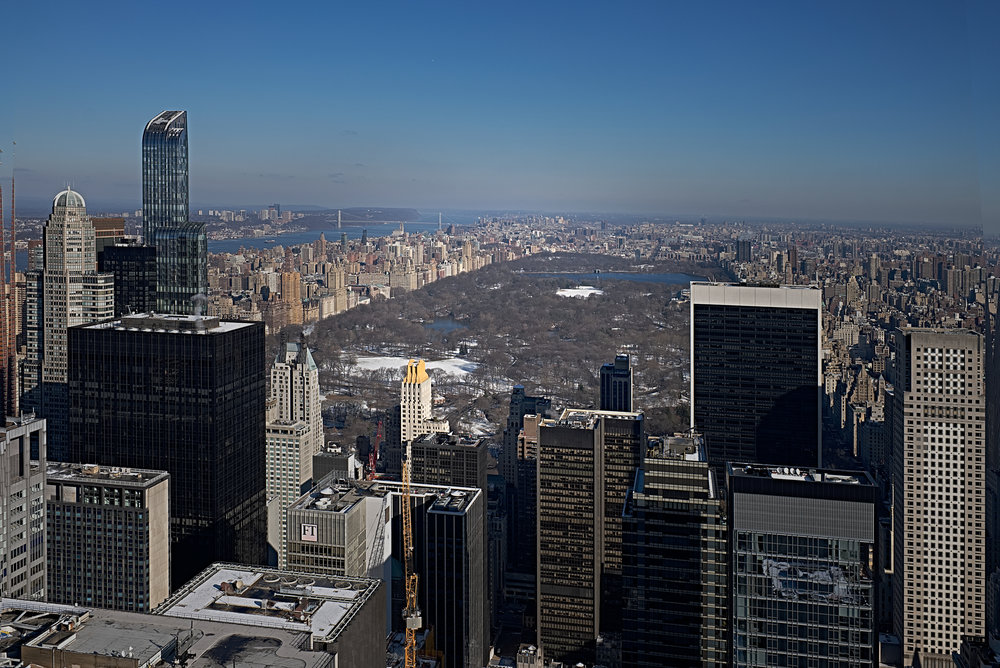
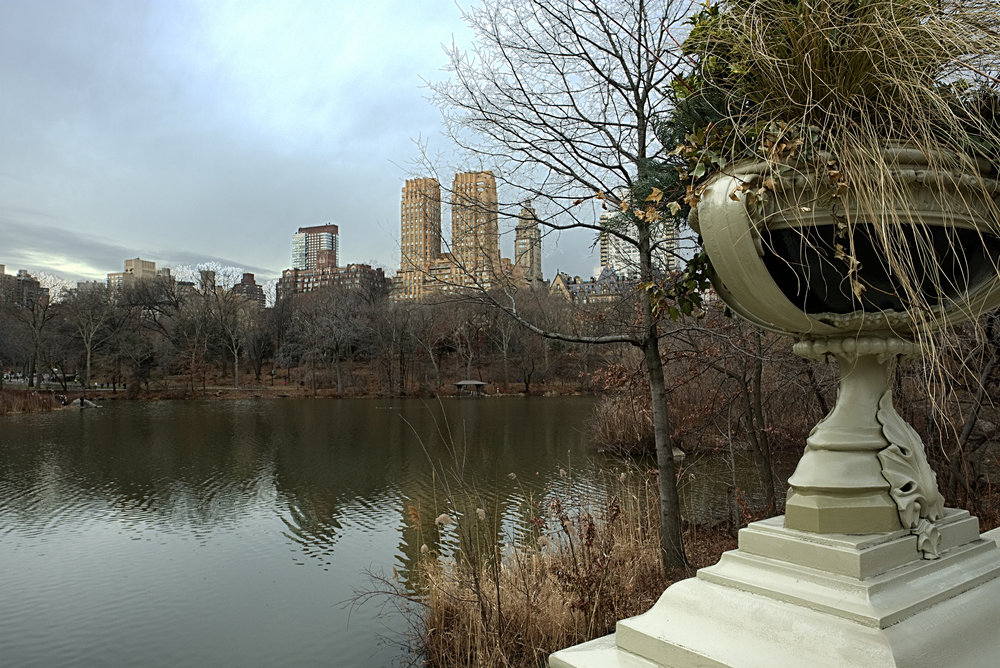
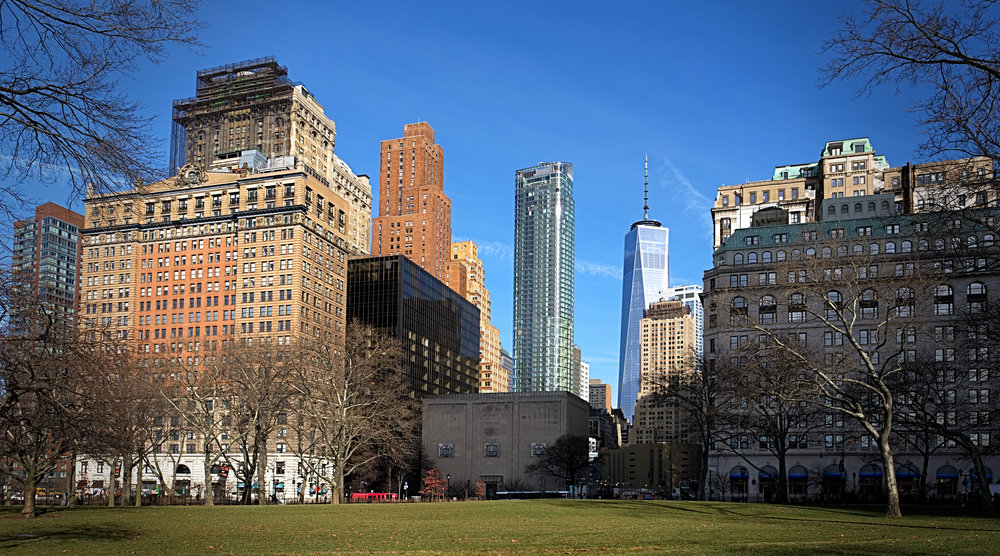
From here we could also see the full 843 acres of Central Park. The design was partially based upon the much smaller park in Birkenhead (in Cheshire, UK) which opened in April 1847 and was the first publicly funded civic park in the world. American landscape architect Frederick Olmsted visited Birkenhead park in 1850 and was very impressed. When he won the design competition for New York’s park in 1858, he incorporated some of the Birkenhead park design principles into his design.
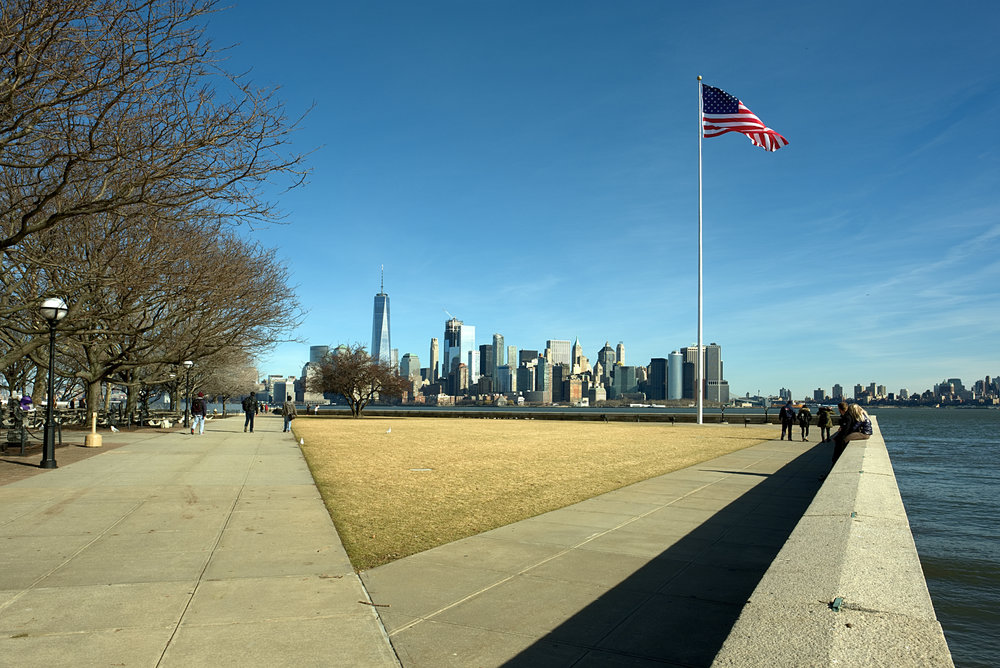
Our ferry trip to Ellis Island was both a chance to see New York from the water and to engage with a pivotal part of US history. Millions of immigrants seeking a new home in America, fleeing from Old World persecution and poverty, arrived at Ellis Island in the 19th and 20th centuries for official processing before being admitted to America. Over nine million of these immigrants were shipped over from Liverpool; for it should not be forgotten that, around 1900, Liverpool was the pre-eminent port in the world for both cargoes and passengers. After long decline, I am delighted to see that Liverpool’s future is now brightening again with new freight terminals and a new cruise terminal. And, as a curious aside, that park at Birkenhead which inspired Central Park in New York is just a few miles distant from the bustling Liverpool terminals.
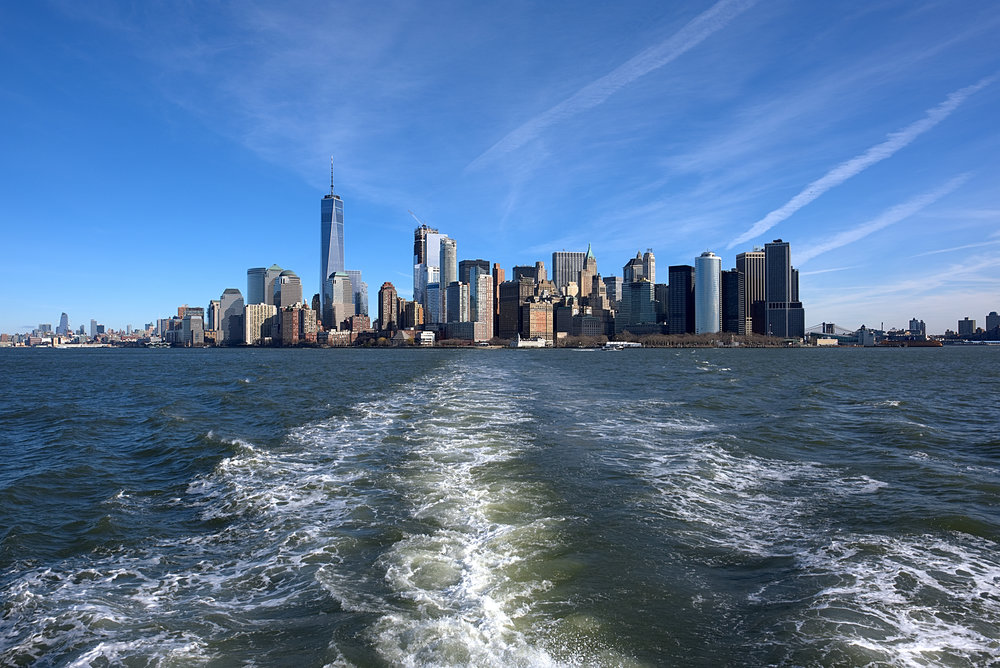
I took my Fuji X-T10 and the newly acquired X-T2 with battery grip to New York. On the former, I carried either the 23mm f/1.4 or the 56mm f/1.2R lens; on the latter I kept the 16mm f/1.4 firmly in place. This seemed a good combination, covering many possibilities. It also emphasised the virtues of adapting to the capabilities of the lenses I had with me. I wanted to avoid thinking about the shots I’d be missing because I didn’t have a long telephoto with me.
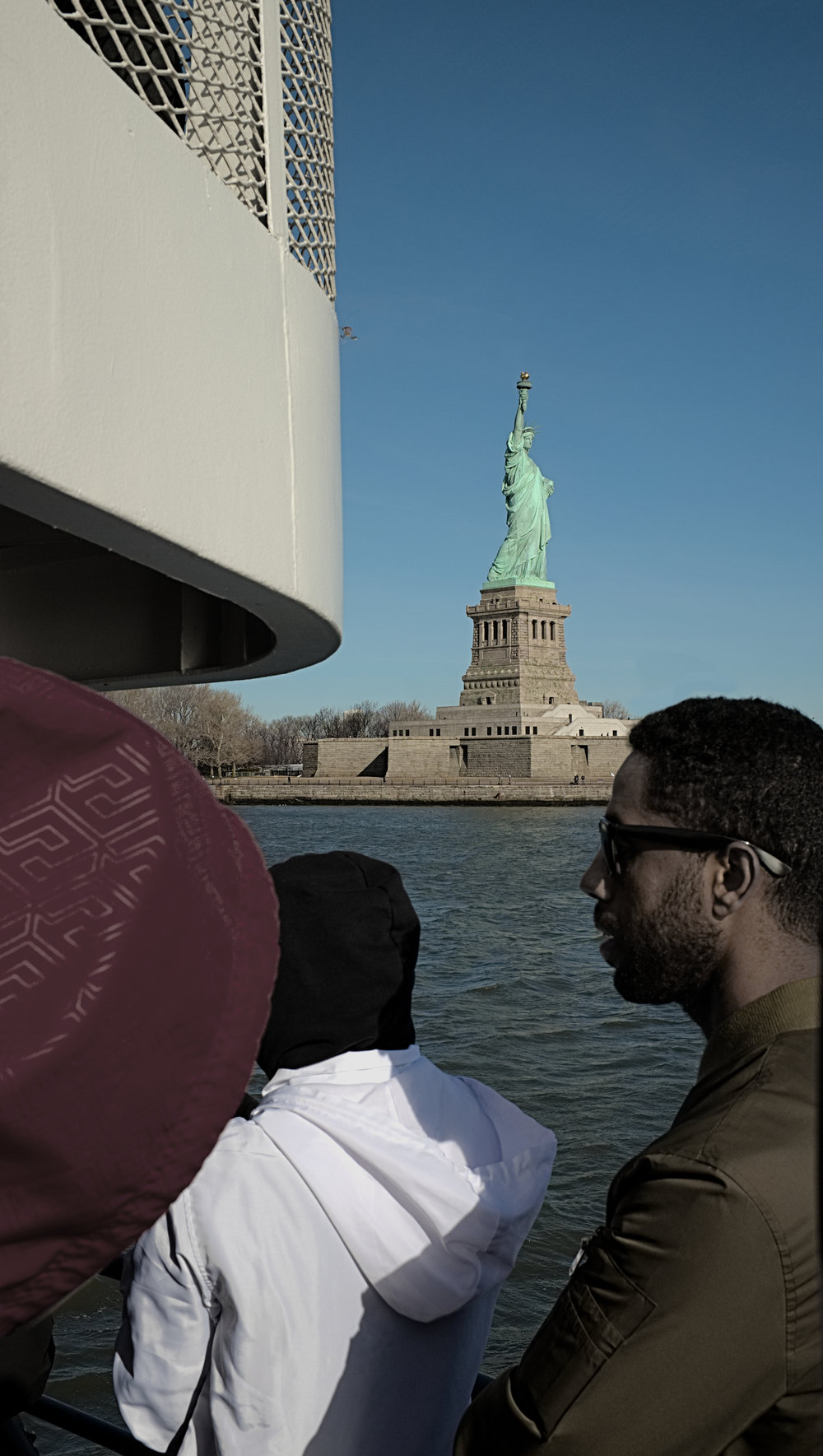
Clearly, my 100-400mm lens remained at home primarily because I knew the huge burden it would become on long walks around the city. On this trip, consequently, three neat primes ruled. The two cameras can be carried all day without the burden of a bag over the shoulder and without a backpack, both of which I find unacceptably restrictive.
I go instead for a waist bag which has just enough room for the third lens, spare batteries, memory cards and lens, or rather, filter wipes. This creates a light, manageable travel combo which makes prolonged walking, sightseeing, eating and coffee drinking relaxed and enjoyable. The waist bag is also more secure than larger bags since it clamps round the waist underneath coats, anoraks or a sweater. I flinch when I think of how I used to carry two heavy, bulky DSLRs with full-frame lenses, including an f/2.8 zoom etc. Good things, in the form of Fuji mirrorless cameras and lenses, come to he who waits!
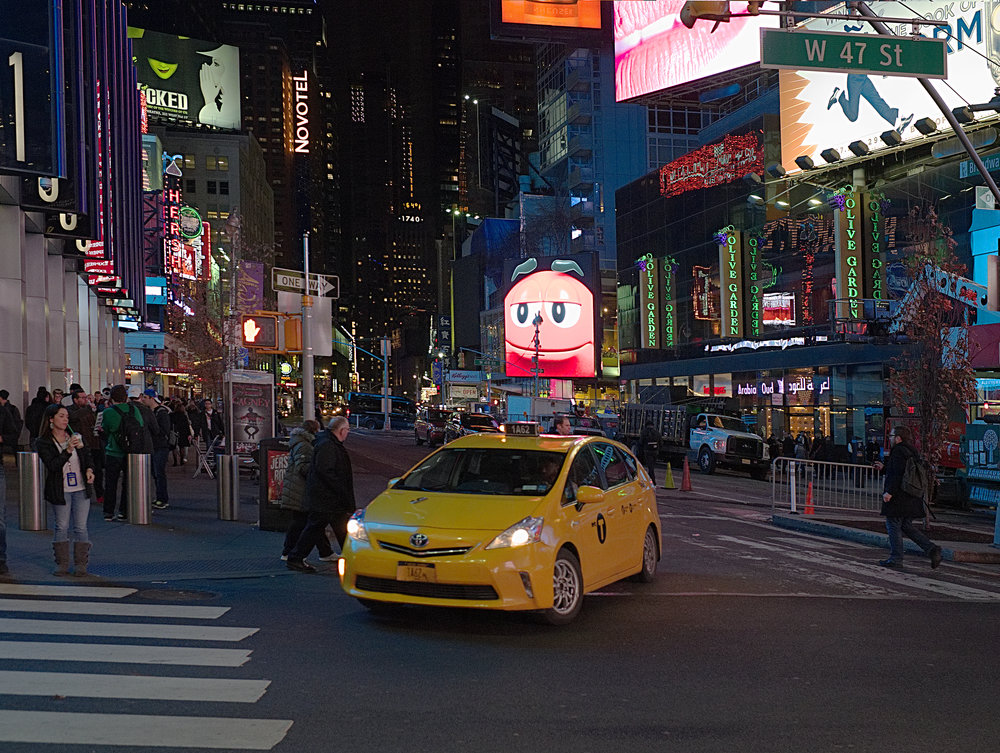
I have praised the 16mm f/1.4 lens before but it really is a stalwart. It’s not of course an ultra-wide angle lens but it is very capable without some of the limitations, or of course opportunities, of wider lenses. It has superb image quality even wide open. It is excellent for landscapes, either in the country or in the city, and it has the great merit of exceptionally close focussing where needed. It can readily handle street photography of the environmental portrait variety and so I can be quite content on those occasions when I only have one camera and this lens.
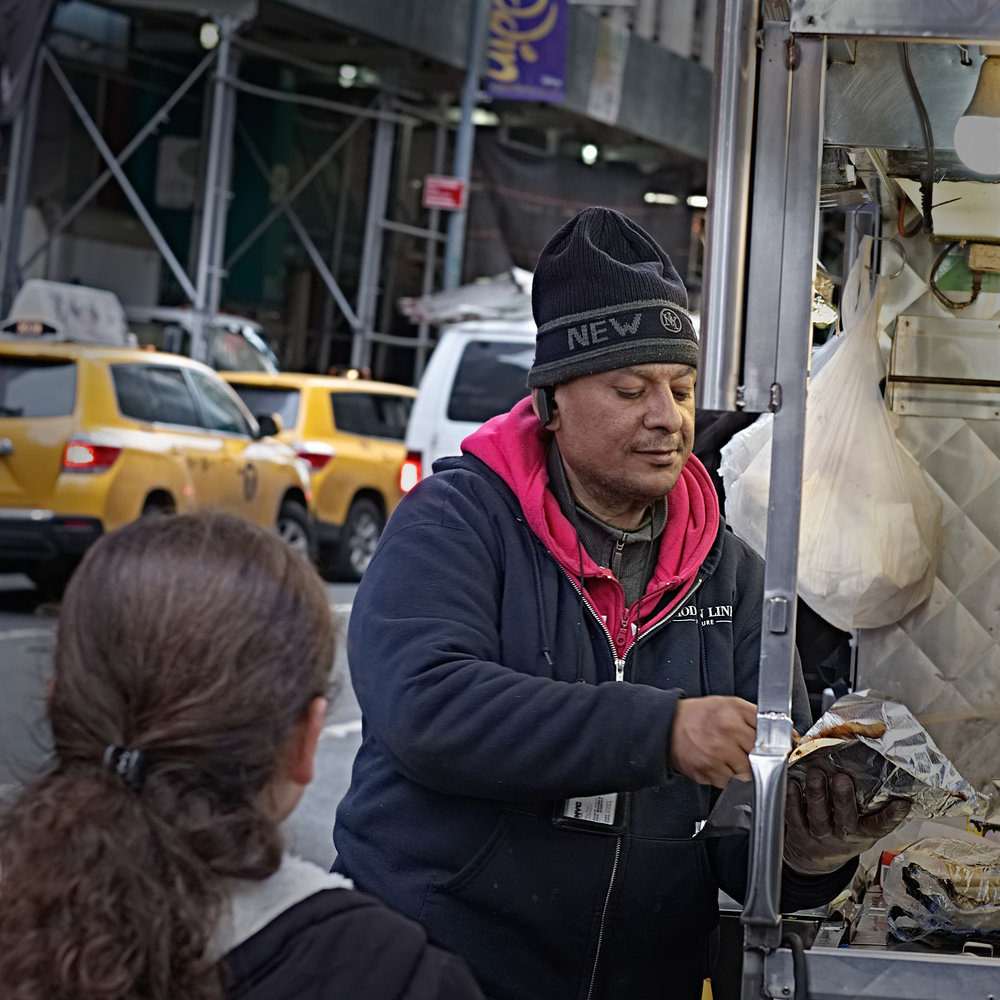
Generally, I like my New York shots because they bring back memories of visiting exciting places and, importantly, reflect the very happy times we had in the city. For this reason, some of my images have certainly strayed well into “record shot” territory; perhaps this is to be expected. However, if some other viewers enjoy them too, then that is indeed a result.
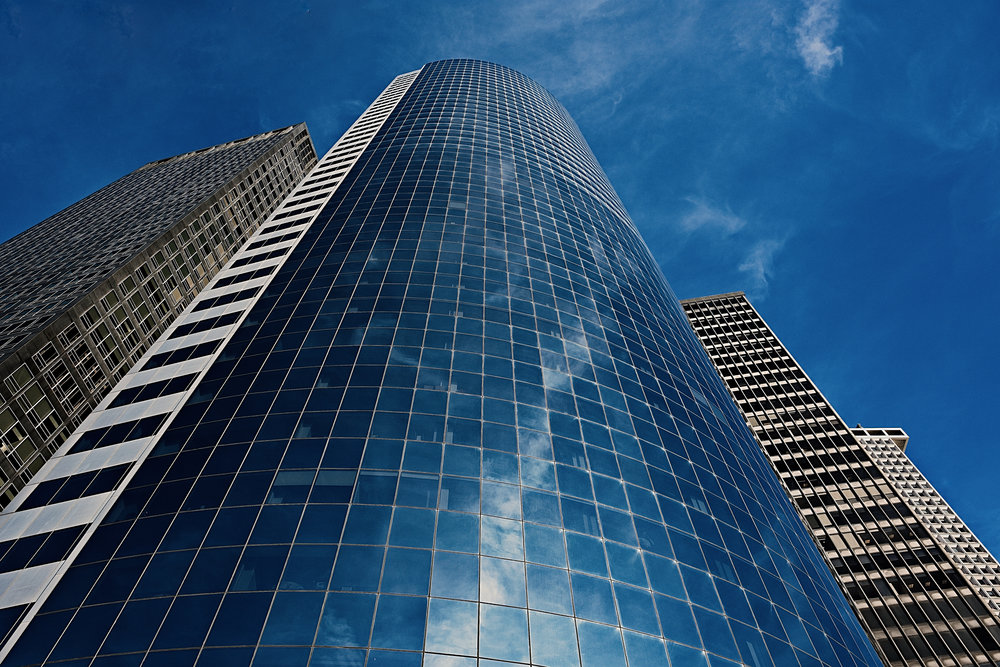

Image 6 of The World Trade Center is shot from Battery Park, not Central Park. 🙂
Christoph, thanks for bring this to our attention. I will check with David Bailey who wrote the article and, if necessary we can change the reference.
John
I love your Indian images in Passage to India II" as I used to visit India on business. I will enjoy your many other Macfilos blogs first before chasing down the rolling road!
I admire your one camera, one lens philosophy and paid homage to it by referring to my happiness at using my X-T2 plus my trusty 16mm F1.4 on their own for some occasions.
In further mitigation, I must emphasies that I have come from being a Canon (6D and 5D mk II) full frame Sherpa! Therefore, I can regard carrying the X-T2, the X-T20 plus three minuscule primes and a waistbag as virtually insignificant, in weight that is, but mighty in photographic potential…….
Finally, my first trip to NY may be my last, not because we didn’t enjoy ourselves, but because there are so many other wonders to see. I could not resist taking three primes.
May I come under your wing, metaphorically, so I can continue to enjoy your images and to give you further chance to pare down my cholice of gear?
David
"On this trip, consequently, three neat primes ruled. The two cameras can be carried all day without the burden of a bag over the shoulder and without a backpack, both of which I find unacceptably restrictive.
I go instead for a waist bag which has just enough room for the third lens, spare batteries, memory cards and lens, or rather, filter wipes. This creates a light, manageable travel combo…… "
David, I need to take you under my wing or else "light and manageable" has a different meaning in the UK.
When I travel to NYC I invairably take just my trusty Leica X1 in an old walking sock( although I have recently upgraded the sock to a Singapore Airlines business class headphone bag-more classy) and if I remember a spare battery in my pocket. I never take a spare memory card as I only shoot a few photos in a day but I try and make ’em good ‘uns.
With this simple outfit and my two feet I reckon that I can handle most photographic situations in NYC and elsewhere and not be burdened with carting unnecessary gear around.
Examples of my "one camera,one lens" philosophy can be found in my contributions to Macfilos ,on my blog at therollingroad.blogspot.com and at Flickr on https://www.flickr.com/photos/118763778@N03/page1
John
Hank R
Waist bag is an ancient one I obtaimed somewhere unknown. It only says "Design" on it so no fancy make. It measures only 9 inches long by 6 inches high and 4 inches wide (with the 23mm F1.4 inside and it only just zips up). Buying new I would go along with a prime to test before purchase.
Thanks your comments
David
Hi David:
Very nice pictures and excellent practical advice on gear selection when traveling light to NYC. What waist bag do you use?
Thanks!
Hank R
It’s just "Central Park."
Oops, of course it is. I should have picked this up and I will amend it now. I think David must have been thinking of the station!